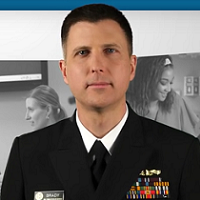 By Jeffrey Brady, M.D., M.P.H., Director of the AHRQ Center for Quality Improvement and Patient Safety
By Jeffrey Brady, M.D., M.P.H., Director of the AHRQ Center for Quality Improvement and Patient Safety
Twitter: @AHRQNews
Each year, about 23 million surgical procedures are performed in ambulatory surgery centers, or ASCs. It’s easy to understand why. For instance, procedures such as cataract surgery, tonsillectomy, knee repair, or endoscopic procedures are less intensive than major surgeries and don’t require a hospital stay. This means that surgical procedures in ASCs can be more cost-effective and more convenient and comfortable for patients.
Much like hospitals, ASCs are strongly committed to quality. The overwhelming majority of ASC procedures are done safely and without incident. However, as with surgery in any other health care setting, complications can result. These include healthcare-associated infections (HAIs), such as surgical site infections, as well as other safety problems.
That’s why we’re so pleased to unveil our new Toolkit to Improve Safety in Ambulatory Surgery Centers. This new toolkit helps professionals in the ASC setting apply the core concepts of AHRQ’s Comprehensive-Unit-based Safety Program (CUSP)—a multifaceted approach that speeds frontline clinicians’ adoption of evidence-based practices to reduce patient harm.
Designed specifically for ASCs, the new resource combines proven practices with staff experiences at more than 650 ambulatory surgery centers. The toolkit was developed as part of an initiative completed last year, AHRQ Safety Program for Ambulatory Surgery.
One element of the toolkit is an implementation guide that provides step-by-step guidance on how to implement the ASC-specific safe surgery checklist. Toolkit elements that are uniquely fashioned for ASCs include PowerPoint modules and facilitator notes on teamwork and communication, coaching clinical teams, patient and family engagement, and sustainability. Modules include demonstration videos and sample checklists. Additional resources cover special topics such as endoscopic procedures and hand hygiene.
The related Ambulatory Surgery Center Survey on Patient Safety Culture, which was developed as part of the AHRQ Safety Program for Ambulatory Surgery, helps ASCs assess their performance in maintaining a staff culture of safety, which is foundational to addressing safety issues at individual facilities. And, importantly, the toolkit includes patient and family engagement materials, including a patient brochure called “Getting Ready for Your Ambulatory Surgery,” which was developed with the input of a patient advocate. This brochure helps patients know what to expect before, during, and after ambulatory procedures.
Patient safety has long been a top priority for AHRQ, and combating HAIs is an essential part of our battle to keep patients safe. As befits an agency dedicated to translating the results of health services research into practice, we at AHRQ remain committed to ensuring that our safety tools and projects are firmly based in the latest science and evidence. This is a mission-driven commitment that we take very seriously.
So try out the Toolkit to Improve Safety in ASCs. We hope you’ll find it useful!
This article was originally published on AHRQ Views Blog and is republished here with permission.
